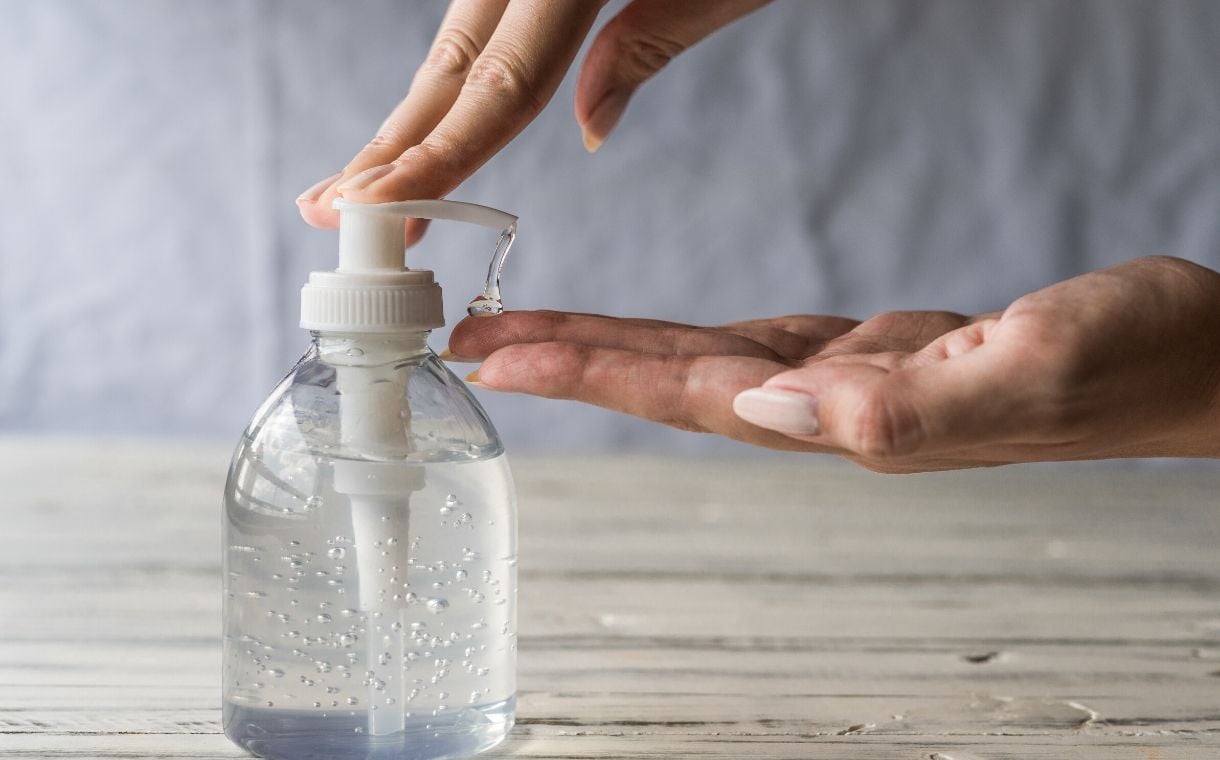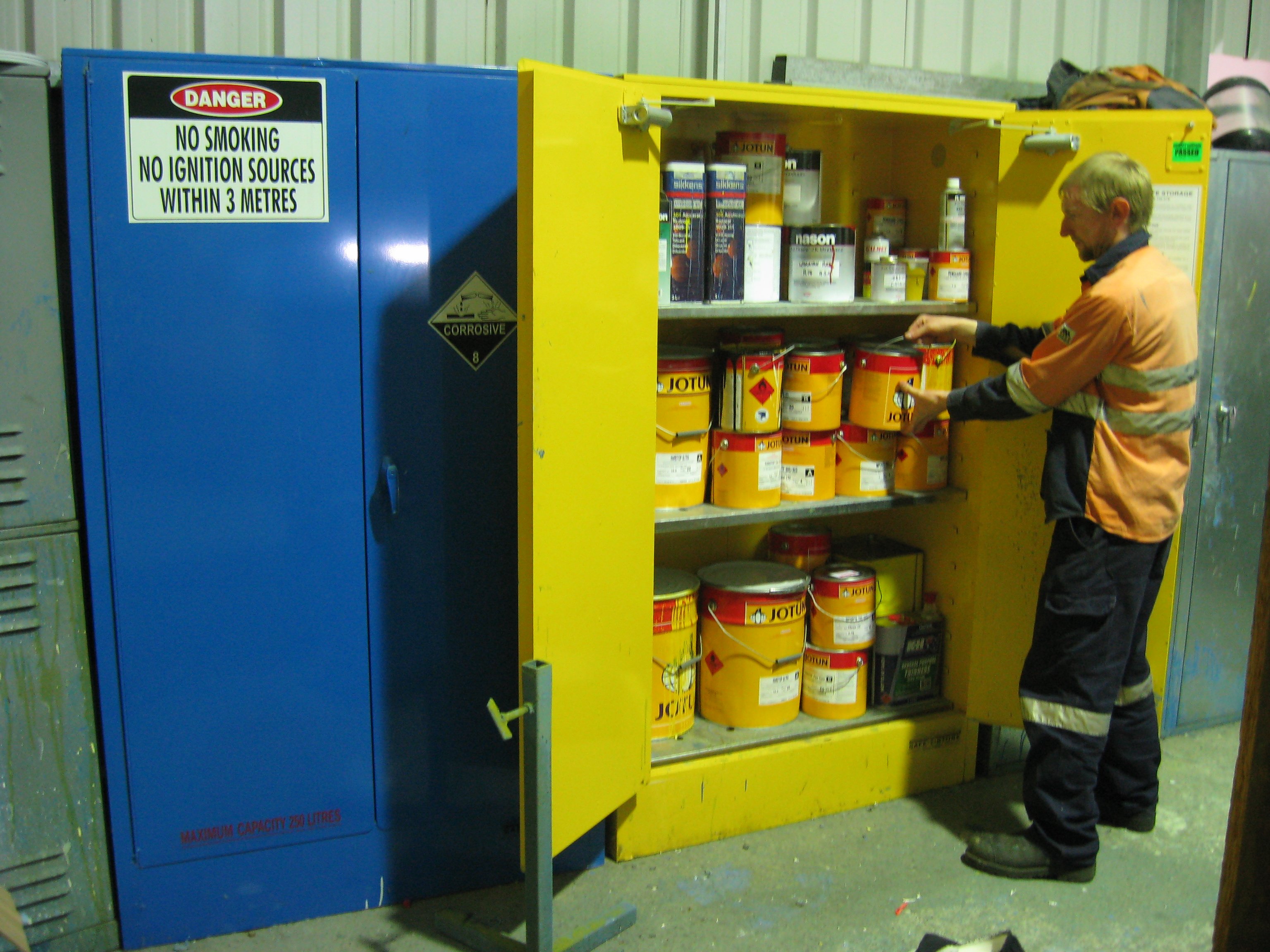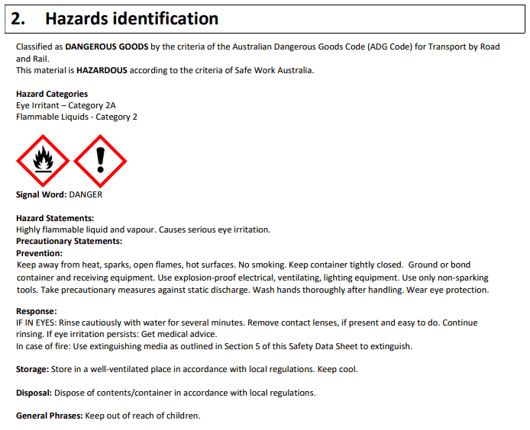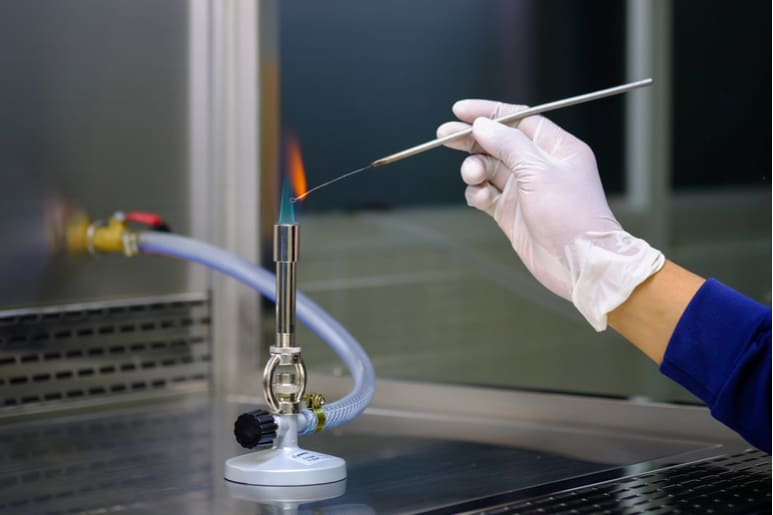Unless you’ve been living under a (very clean) rock for the last couple of years, you’ve probably invested in some hand sanitiser for your home and your business. However, now that we’re all regularly using this type of product in our daily lives (and probably will be for some time to come), it raises many questions about the product itself. For example: What are the chemical properties of hand sanitiser? Are there any hazards associated with its use? And how should it be stored? Due to the confusion with this subject matter, we’ve dedicated this blog to explaining how you can determine the hazardous properties of hand sanitizer (as well as any other chemicals you may be holding) and how it should be handled and stored at your workplace. If you’ve ever asked, ‘Is hand sanitiser a flammable liquid?’, keep reading to find out how you can stay safe in your workplace.
Referring To The Safety Data Sheet
One thing that we often say in our blogs, is to refer to the Safety Data Sheet (SDS) of any chemicals that you have onsite.
The SDS is an essential document that will explain all the hazards associated with the chemical. It will also detail the requirements for its handling and storage, as well as any procedures you have to follow in the event of an emergency.
Whatever hazardous chemical you’re carrying, you must study the individual SDS of each product you have purchased to determine the ingredients as well as its Dangerous Goods class.

Just like any chemical that you have onsite, you must refer to the SDS to determine the hazards associated with your hand sanitisers.
WHS Regulations For Safety Data Sheets
The WHS Regulation states in Section 344 that any person conducting a business or undertaking is subject to the following requirements regarding SDS:
- They must obtain the SDS for the hazardous chemical that they’re carrying. This can be from the manufacturer, importer or chemical supplier.
They must also ensure that;
- The current SDS is readily accessible to all workers who are involved with the using, handling or storage of that chemical. It must also be available for any emergency workers who may be exposed to the chemical when attending the site.
When You Don’t Need An SDS
It’s important to note that, if you’re purchasing small quantities of hand sanitiser from a retailer — such as a few pump packs per week for your staff and visitors — you don’t have to request an SDS. Safe Work Australia explains that this is due to the quantities of the chemical being more consistent with household use rather than commercial purposes.
Also, any chemical that lacks physical and health hazards does not require an SDS. Therefore, if you’re unsure of the chemical properties of your hand sanitisers or other cleaning products, consult with the company you’re purchasing the products from for further information.
IMPORTANT: If you’re storing Dangerous Goods, you’re obligated to make the SDS for each hazardous chemical available to staff and emergency services. We recommend selecting an SDS Document Holder that can be attached to your chemical safety cabinet, so it’s always within easy reach for personnel at your site.
Are Some Hand Sanitisers Flammable?
Many hand sanitisers can include flammable liquids such as ethanol or isopropanol. However, the risk of fire or explosion is not the only risk that some hand sanitisers may pose.
There are other ingredients in your sanitiser, such as the commonly found hydrogen peroxide, that may not be flammable – but are still classed as an oxidising agent. If your product is classed as any type of Dangerous Good, it must be handled stored in a compliant manner to reduce the risk of harm.

Any type of Dangerous Good must be stored in a safe and compliant manner to reduce risk.
If the hand sanitiser you’re carrying at your workplace is alcohol-based, then it’s likely that it will be classed as a flammable liquid. See the below SDS to find out more about some alcohol-based hand sanitisers and the hazards that they may pose to your workplace.
Interpreting Your SDS

The above section is the hazards identification information for an alcohol-based sanitiser. The SDS states that the key ingredient in this hand sanitiser is ethyl alcohol.
You’ll see from the SDS that this product is classed as a flammable liquid. The hazard statement in the SDS explains that this product is regarded as a highly flammable liquid and vapour.
Requirements for its storage include being placed in a well-ventilated area, away from heat and ignition sources, separated from incompatible materials, and in accordance with ‘local regulations’.
While flammable liquids are Class 3 Dangerous Goods, there are also 4 categories of flammable liquids as defined by the Globally Harmonised System (GHS). This particular product is defined as a Category 2 flammable liquid – which means it has a flash point <23 °C and initial boiling point > 35 °C. This is a crucial factor in dictating the handling and storage requirements for this product.

The flash point of your chemical is the lowest temperature where it emits enough flammable vapours to ignite in the presence of an ignition source.
In addition to this fire hazard, there is a human health hazard associated with the use and storage of this sanitiser. As the SDS explains, it’s a Category 2A eye irritant – which means the chemical has the potential to cause serious eye irritation.
Therefore, this particular hand sanitiser (and many alcohol-based sanitisers) must be stored in a way that reduces the risk of fire, explosion and eye irritation — due to its ability to emit hazardous vapours at a low temperature.
How Do You Store Flammable Liquids?
While we’re obliged to maintain high standards of sanitation due to the pandemic, it’s also important to remember that any hazardous chemical must be handled and stored in the correct way if you are to minimise the risks that they may pose.
With that being said, if you have determined that your hand sanitising products are indeed flammable liquids, then you should take the next steps towards storing them in a safe and compliant manner.
The Australian Standard AS 1940:2017 – The storage and handling of flammable and combustible liquids details the basic storage requirements for this class of Dangerous Goods.
What Risks Do Class 3 Flammable Liquids Pose?
As we’ve touched on, there are multiple risks associated with the use of flammable liquids in the workplace.
These risks may include:
- Fire, flash back and explosion - due to flammable liquids meeting an ignition source
- Human harm - such as eye or skin irritation, asphyxiation or even fatality
- Environmental damage – if flammable liquids spill into soil, drains or waterways
- Chemical reaction - with incompatible chemicals or materials
To reduce these risks, we recommend conducting a risk assessment at your site. This is so you can determine the correct course of action when it comes to identifying hazards and implementing (and maintaining) the appropriate control measures.

There are many risks associated with the use of flammable liquids including eye irritation, skin burns and asphyxiation.
However, even without a risk assessment, there are some general recommendations that can help you safely store your flammable liquids.
As per the requirements of AS 1940:2017, we recommend the following guidelines for flammable liquids storage:
Aggregate Quantities
If you’re storing flammable liquids, you must adhere to the requirements for aggregate flammable liquid quantities.
The aggregate capacity of flammable liquids cabinets shall not be greater than:
Ground Level - 850L per 250 m2 of floor space
Other Floors - 250L per 250 m2 of floor space
You should also separate each aggregate quantity by a distance of at least 10 metres.
Isolating Ignition Source
Due to the low flash point of flammable liquids, your workspace should be free from heat and ignition sources. Flammable liquids must not come within 3 metres of an ignition source – whether that’s a pilot light, welding equipment or a powerpoint.

Flammable liquids must never be handled or stored anywhere near an ignition source.
Spill Containment and Bunding
If flammable liquids spill, it can increase the risk of fire, explosion, human harm and environmental damage. Therefore, any indoor or outdoor flammable liquids store must be equipped with compliant spill containment that conforms with AS 1940:2017. For indoor locations, flammable liquids storage cabinets provide adequate spill containment as well as allowing for the free movement of vapours within the cabinet due to the perforated shelves. In outdoor flammable liquid stores that are manufactured to meet Australian Standards, the natural ventilation system enables the dispersion of flammable vapours and the spill containment compound is capable of containing chemical spills and leaks.
REMEMBER: Cleaning up chemical spills and maintaining good housekeeping practices should be part of your risk control strategy for any flammable liquids store. Your spill containment compounds and bunds are not designed to hold chemicals for long periods of time as this reduces their capacity and allows chemicals to sit in the compound – creating a fire or asphyxiation hazard.
Separating Incompatible Substances
Flammable liquids are incompatible with some other classes of Dangerous Goods. Therefore, it’s important that they’re handled and stored in a way that keeps them separated from incompatible substances. Flammable liquids are incompatible with Dangerous Goods classes including:
Class 2.1 Flammable Gas – must be separated by at least 5 m
Class 2.2 Non-Flammable Non-Toxic Gas – must be separated by at least 3 m
Class 4.1 Flammable Solids – must be separated by at least 3 m
Class 4.2 Spontaneously Combustible – must be separated by at least 5 m
Class 4.3 Dangerous When Wet – must be separated by at least 5 m
Class 5.1 Oxidising Agents – must be separated by at least 5 m
Class 5.2 Organic Peroxides – dedicated stores or storage cabinets recommended
Class 6 Toxic Substances – must be separated by at least 3 m
Class 8 Corrosive Substances – must be separated by at least 3 m
How To Safely Store Alcohol-Based Hand Sanitisers
As we’ve explained in this blog, you must first refer to the SDS of your chemical products to determine the hazards associated with the product and its Dangerous Goods classification. If you are carrying any type of Class 3 Flammable Liquids in your organisation, you must ensure that they’re handled and stored in a way that reduces the risk of fire, explosion, human harm and environmental damage. One of the simplest ways to safely store your flammable liquids is in a flammable cabinet that’s been manufactured to meet the requirements of AS 1940:2017. If you’d like to find out more about the safe storage of flammable liquids, why not access our guide, Essential Considerations When Storing Flammble Liquids Indoors? From understanding flammable liquids to conducting a risk assessment, our free guide will help you meet your chemical compliance obligations.
Joining the team as a Dangerous Goods Storage Consultant, Melissa Hampton became Storemasta's Marketing Manager in late 2021. With extensive knowledge and experience in chemical compliance, Melissa is responsible for leading the Marketing team and helping shape their marketing strategy. In her spare time, you can find Melissa hiking, swimming and enjoying the great outdoors in beautiful north-west Tasmania.

